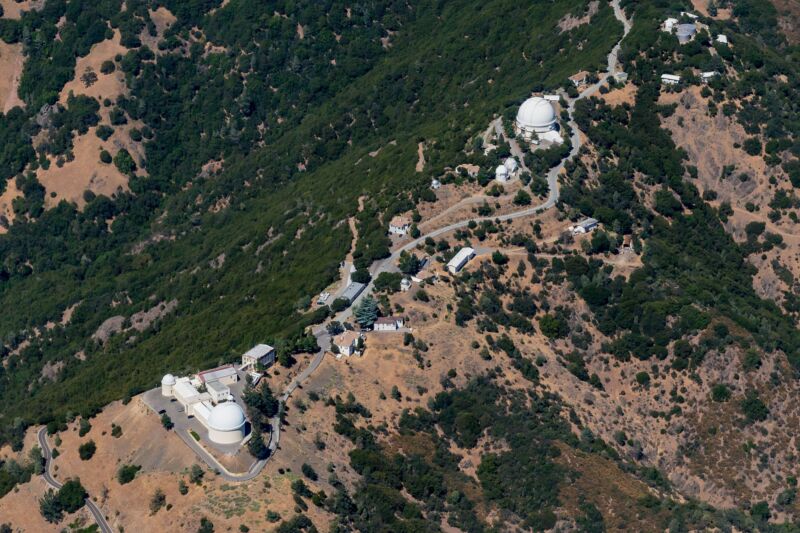
Enlarge / Lick Observatory (credit: Bill Dally | Getty Images)
On the morning of Sunday, August 16, freak summer thunderstorms rolled into the Bay Area, peppering the ultra-dry landscape with lightning, setting nearly 400 fires across Northern California. Ten miles to the north of the historic Lick Observatory, atop Mount Hamilton near San Jose, one such blaze was closing in, and fast: By Tuesday morning, the flames were 6 miles away. That night, the California Department of Forestry and Fire Protection, or Cal Fire, made the call to evacuate the facility’s 30-odd residents and staff members, save for the superintendent, Kostas Chloros, who’d stay on to coordinate the defense of one of the world’s most cherished observatories.
It was here that in 1969 astronomers made the first laser lunar ranging, calculating the precise distance to the moon. The observatory has helped scientists explore the structure of the universe, finding the masses of nearby galaxies, as well as black holes and quasars. Its Automated Planet Finder robotic telescope has been instrumental—literally and figuratively—in sniffing out the exoplanets that orbit distant stars.
No comments:
Post a Comment